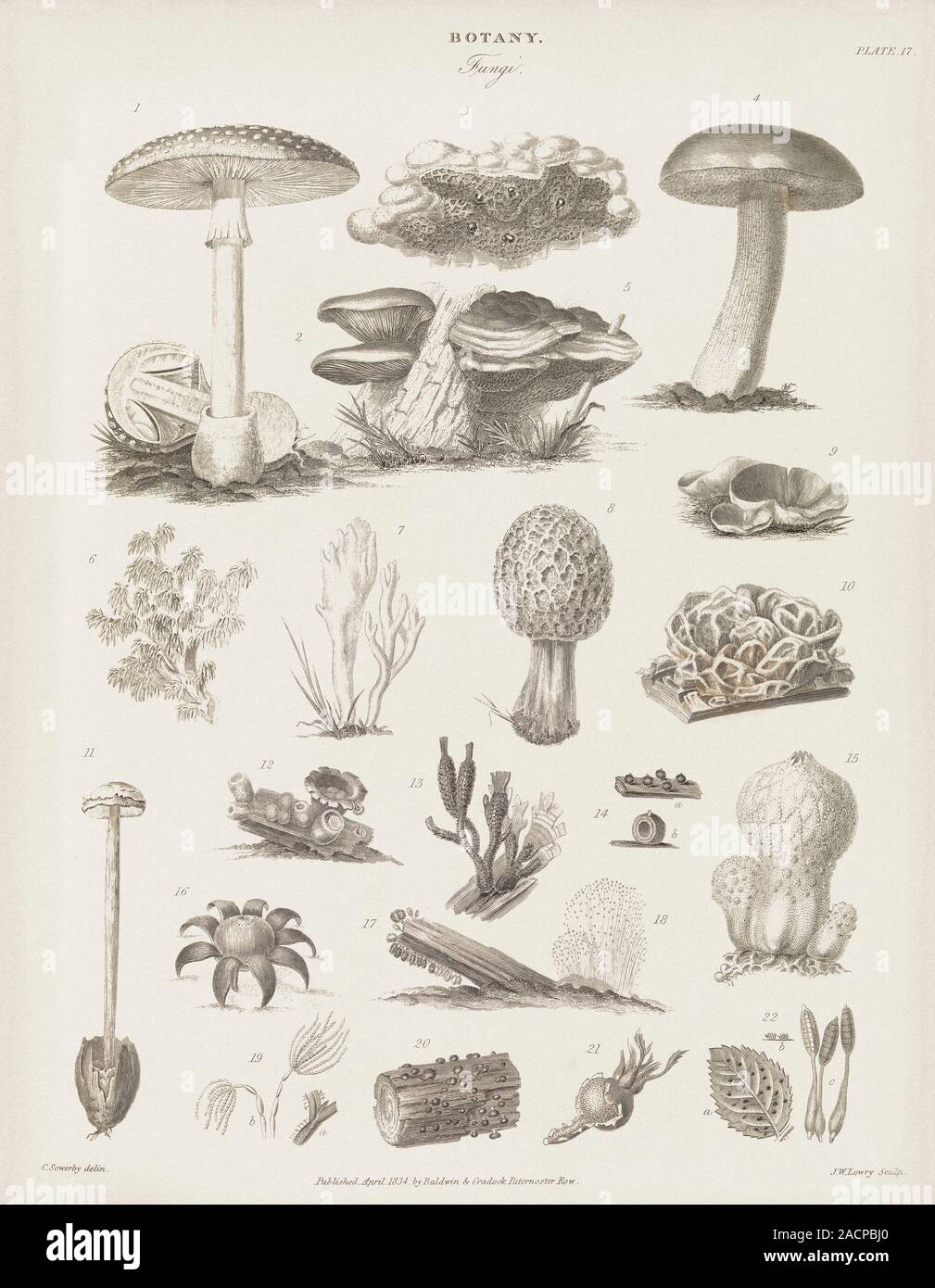Fungal fruiting bodies, 19th-century artwork. The shape of fungal fruiting bodies can range from capped and gilled toadstools and mushrooms (top), to

RMID:Image ID:2ACPBJ0
Image details
Contributor:
Science Photo Library / Alamy Stock PhotoImage ID:
2ACPBJ0File size:
55.2 MB (4 MB Compressed download)Releases:
Model - no | Property - noDo I need a release?Dimensions:
3869 x 4984 px | 32.8 x 42.2 cm | 12.9 x 16.6 inches | 300dpiDate taken:
15 April 2013Photographer:
MIDDLE TEMPLE LIBRARY/SCIENCE PHOTO LIBRARYMore information:
Fungal fruiting bodies, 19th-century artwork. The shape of fungal fruiting bodies can range from capped and gilled toadstools and mushrooms (top), to bracket fungi (upper centre), morels (centre), puffballs (lower right and lower left), and simple moulds and sporangia. The purpose of such structures is to distribute the fungal spores to form a new fungal body (mycelium). These mycelia will then in turn produce new fruiting bodies. Artwork from 'Encyclopaedia Metropolitana', an encyclopedia published in London between 1817 and 1845. Thirty volumes were issued in 59 parts, with 22, 426 pages and 565 plates. This plate is dated 1834.